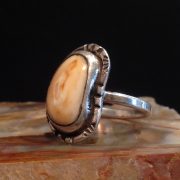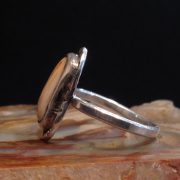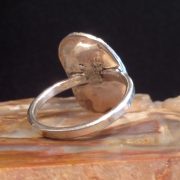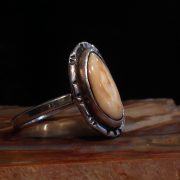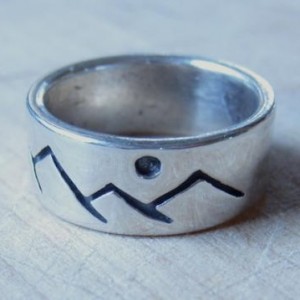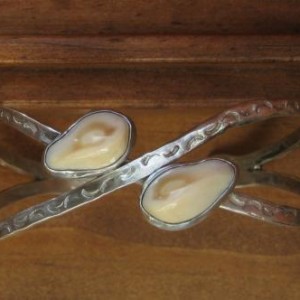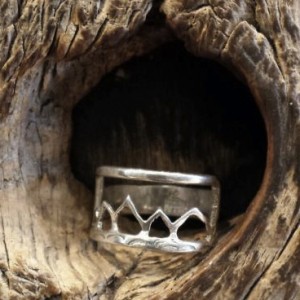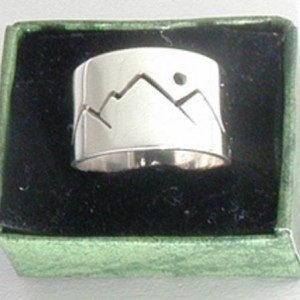Product Description
Elk Ivory in Sterling with hand stamped perimeter bezel. This ring has a 2 mm band. The Ivory from an older elk that has ground it flat, it has unusual caramel coloring. It is a size 8 1/2 and can easily be sized up to most any size smaller than a 10. The total weight of this ring is about 4.6 grams.
Click this link for Elk Ivory photos We have made in the past. Custom work available using your ivories or ours.
THE STORY OF ELK IVORY
Elk, cervus canadensis, are the only native north american land barren animal with ivory tusks. In the mastadonian period Elk large as their cousin the bison roamed our western plains. Elk, massive and strong had bodies built to survive intense climates. Thick, muscular necks supported the weight of large antlers, and two awesome ivory tusks looming from their top lip like deadly spears. The ice age melted and north american mammals genetically mellowed, the large ivory tusks receded in front of their eye teeth.
To Native Americans, wapiti means stamina. Ivory adorned every occasion, especially for women. Crow suitors supplied 300 ivories for a bride’s wedding dress. Bridesmaids beaded ivories into concentric rows on the gown. Ivory trading by trappers and Indians was hot, ivory as important as horses or guns.
Settlers in the high country in the late 1800s shifted the history of Elk and ivory trade forever. Migration routes were obstacle courses of fences, buildings and plowed fields.
Tusks were popular for making rings and watch fobs and settlers made extra money selling legally harvested ones and tusks of winter kill. Supply increased as Elk, disrupted from migratory routes, starved due to poor winter range.
Outlaws appeared, poaching Elk for ivories only. Known as “Tuskers” they built hideouts, a famous cabin was northwest of Jackson Lake. In 1905 Tuskers were such a problem that the Wyoming legislature set aside a portion of Jackson Hole as the Teton Game Preserve and banned hunting there, Elk still ruthlessly died at the hands of Tuskers.
President Roosevelt put Elk ivory on prohibition in 1912 busting the tusk boom. Killing Elk just for ivory became a felony. Jackson Hole was a last stronghold for Tuskers. Congress eventually passed legislation creating the National Elk Refuge. The Jackson Hole herd is the largest in North America, Elk continue to roam ancestral territory. Thanks to strict regulations, licenses and citizens dedicated to wildlife preservation, elk ivory is again politically correct to wear.


